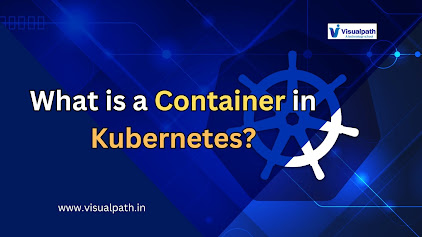- Get link
- X
- Other Apps
- Get link
- X
- Other Apps
Introduction:
Kubernetes Containers,
particularly in the Kubernetes ecosystem, have emerged as a key technology
enabling this transformation. But what exactly is a container in Kubernetes,
and why has it become so crucial for modern cloud-native architectures? Docker
and Kubernetes Training
What
is a Container?
At its core, a container is a
lightweight, standalone executable package that includes everything needed to
run a piece of software. This package includes the application code, its
libraries, dependencies, configuration files, and runtime. Containers
are isolated from each other, ensuring that the code inside one container
doesn’t interfere with another, even if both are running on the same underlying
infrastructure.
Role
of Containers in Kubernetes:
Kubernetes, an open-source
platform for managing containerized applications, is built to orchestrate and
manage large clusters of containers. Kubernetes automates the deployment,
scaling, and operation of application containers across clusters of machines.
While containers are a core unit of application deployment, Kubernetes is the
system that efficiently manages these containers across a fleet of physical or
virtual machines, providing high availability, fault tolerance, and
scalability. Kubernetes
Online Training
Here’s
how containers work within Kubernetes:
Pod
Structure:
In Kubernetes, containers do not run directly on nodes (physical or
virtual machines); they run inside a structure called a pod. A pod is
the smallest and most basic unit in Kubernetes. It
represents a single instance of a running process in a Kubernetes cluster.
Portability
and Consistency: One of the key reasons containers are valuable in Kubernetes is their
portability. Containers, once built, can run anywhere—on a developer’s laptop,
in a data center, or in a cloud environment. The consistency of the environment
ensures that the same container will behave the same way regardless of where it
is deployed. Docker
Online Training
Resource
Efficiency: Since containers share the same OS kernel, they consume fewer resources
compared to VMs, making it possible to run more applications on the same
hardware. This efficiency is vital in Kubernetes environments, where
applications need to scale dynamically in response to fluctuating workloads.
Advantages
of Using Containers in Kubernetes:
Scalability: Containers, when orchestrated by
Kubernetes, allow for seamless scaling. Kubernetes automatically adjusts the
number of running containers based on the demand for the application. For
example, if web traffic spikes, Kubernetes can spin up additional containers to
handle the load, then reduce them when demand drops.
Resilience: Kubernetes ensures that containers
are resilient. If a container fails, Kubernetes automatically replaces it with
a new one, ensuring high availability of applications. Kubernetes
Certification Training
Flexibility
and Modularity: Containers enable the microservices architecture, where an application
is broken down into smaller, independent services that communicate with each
other. Kubernetes excels at managing these microservices, allowing developers
to update, scale, or troubleshoot individual components without affecting the
rest of the application.
Conclusion:
Containers have revolutionized the
way applications are deployed and managed, and Kubernetes has emerged as the
leading orchestration platform for containers. By abstracting the complexities
of infrastructure management, Kubernetes allows developers to focus on building
and scaling applications while ensuring high availability, resource efficiency,
and operational consistency.
Visualpath is the Leading and Best Institute
for learning Docker and Kubernetes Online
in Ameerpet, Hyderabad. We
provide Docker Online Training Course, you
will get the best course at an affordable cost.
Attend Free Demo
Call on - +91-9989971070.
Visit: https://www.visualpath.in/DevOps-docker-kubernetes-training.html
WhatsApp : https://www.whatsapp.com/catalog/919989971070/
Visit Blog : https://visualpathblogs.com/
CKA Training Online
Docker and Kubernetes Training
Docker Online Training
Kubernetes Certification Training
Kubernetes Online Training
Kubernetes Training in Ameerpet
- Get link
- X
- Other Apps

Comments
Post a Comment